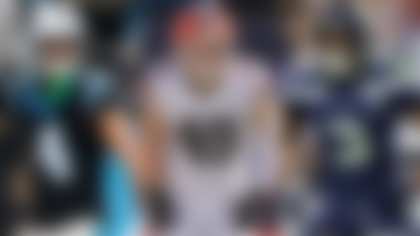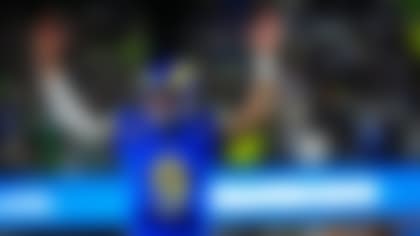As made clear in Parts 1-6, teams need an elite quarterback to compete in today's NFL. But getting one is the biggest risk an organization can take.
It is easy to identify the qualities it takes to be successful as a quarterback in this league, but nearly impossible to be certain if a player has each of these qualities in the right ratio to be successful. If you pick a QB correctly, you're likely going to be a perennial contender for the next decade. If you take one and miss, your team is set back for a decade and the coach and/or GM likely will be out of work. If you pass on one who turns out to be a franchise player, it's the same deal.
With that warning in mind, let's see what we can make of this years quarterbacking options in the draft.
By every indication possible, we are going to see two quarterbacks taken with the first two picks. Stanford's Andrew Luck and Baylor's Robert Griffin III will join the ranks of Jim Plunkett and Archie Manning (1971), Drew Bledsoe and Rick Mirer (1992), Peyton Manning and Ryan Leaf (1998) and Tim Couch and Donovan McNabb (1999) as quarterback duos selected with the top two picks in the draft. History tells us that we shouldn't be surprised if either Luck or RG3 fails. Having said that, I just can't see, barring injury, these two players not being successful in the NFL. Both have every physical measureable needed to compete in this league (and you can't say the same about some of the other names on that list). Both have an intellect and athletic intelligence that is a must in today's NFL quarterbacks. Both have that ineffable quality of commanding presence coveted in a quarterback. Both raised the level of their two institutions to heights they had not previously attained.
Andrew Luck combines all of these attributes in a way that reminds me most of Aaron Rodgers. I know this is a lofty comparison, particularly since I am comparing him to the Rodgers of today, not the Rodgers who plummeted to the 24th pick of the 2005 draft. Rodgers fell, if you remember, because people questioned his arm strength and athleticism. He was also hurt somewhat by the struggles of his predecessor at Cal, Kyle Boller, whom my Baltimore Ravens took in the 2003 draft. After witnessing Boller's problems, some scouts worried that Rodgers might be nothing more than a "system quarterback." All those reasons seem foolish now, but they caused Rodgers to free-fall on draft day.
Luck likely will start from Day 1 with the Indianapolis Colts. He will struggle to a degree, the way Peyton Manning and Troy Aikman did in their rookie years. Combined, Aikman and Manning went 3-24 and threw 46 interceptions as rookies. And both of them were on better teams than the one Luck is going to in Indy. But in today's game, the Colts will be able to surround Luck with the necessary talent quickly enough to give him a chance to grow and display his considerable talents. Let's just hope he can avoid being beaten up the way David Carr (the No. 1 overall pick of the Houston Texans in 2002) was when he was sacked 76 times in his rookie year.
Robert Griffin III also likely will begin the season as the Washington Redskins' starter. Mike Shanahan will move Griffin in the pocket a good deal with his bootleg game, much the same way he used Jake Plummer in Denver. I equate Griffin most to Steve Young in his potential to be both a pocket passer and still use his unique athletic skills outside the pocket. In Young's first 19 starts, with Tampa Bay, he had 11 TDs to 21 interceptions. Griffin will progress more quickly than Young, and the Redskins are already a better team than the Buccaneers squad with which Young began his NFL career. Washington's added some weapons on offense that will give Griffin a chance to look better than Luck in his rookie year. (It wasn't until after Young went to San Francisco and sat behind Joe Montana for five years that he got his first substantial chance to start. He was more mature, more polished and playing for a far better team. Look for RG3's rise to be more rapid than that.)
It won't be long after Griffin goes off the board that people start talking about Ryan Tannehill. Last year, we saw Jake Locker go to Tennessee with the eighth pick, Blaine Gabbert go to Jacksonville with the 10th pick and Christian Ponder go to Minnesota with the 12th pick. This year, Tannehill looks to be pushed up into this level of the draft, if for no other reason then need.
I equate Tannehill to JaMarcus Russell, who the Oakland Raiders took in 2007 with first overall pick. Both are tremendous physical specimens. Both pretty much started only two seasons with similar completion percentages (around 64 percent) and about twice as many touchdown passes as interceptions. I like Tannehill and the potential he represents, but he didn't transform his team the way Luck and Griffin did (Texas A&M finished the regular season 6-6). His potential, of course, is undeniable. I am reminded of the old coaching admonition, "Son, your potential is going to get me fired." I would be much more comfortable taking Tannehill later in the first round, or better yet, early in the second. Of course, the reality is that he's not going to be available then.
The second round will likely see two or three quarterbacks taken, with Oklahoma State's Brandon Weeden, Arizona State's Brock Osweiler and Michigan State's Kirk Cousins all possibilities. They each have a noticeable nick that will keep them out of the first round: Cousins is a little mechanical in his release; Oswiler, at 6-foot-7, just doesn't look like any other NFL quarterback; and Weeden is already 28 years old. Yet there are players who have succeeded from a similar draft position, including Andy Dalton last season with the Bengals.
Osweiler is an intriguing prospect, but one that has been a classic miss in this league. Obviously his size is something we are not used to seeing in an NFL QB. He has, possibly, the strongest arm in the draft, though not the most accurate. And his athletic ability is deceiving because of his size. But the data is limited: He's basically a one-year wonder, completing 63 percent of his passes for 26 touchdowns and 13 interceptions. In short, he's a project and will cause veteran personnel men to have visions of the clunky Dan McGwire. Taking a flier on him at any point prior to the second round would be a mistake.
Weeden's talents are obvious, though they also come with the challenge of trying to project a spread quarterback into the NFL system. But he turns 29 in October and that has to affect where he will be selected. At the same time, with his maturity, he might be able to more readily establish himself as a backup in the league. He, too, will be a solid second- or third-round selection. Taking him in the first round would be reach.
Luck and Griffin will go instantly; Osweiler, Cousins and Weeden will likely stay on the shelf until Day 2. In the end, the quarterback who everyone will be looking at Thursday night is Tannehill, who could go anywhere from No. 4 overall to late in the first round. With Tannehill, you return to the basic question: Is he a franchise quarterback? If your evaluation says he is, he is worth whatever pick you use to get him. But compared to the impeccable résumés of Luck and Griffin, Tannehill's body of work is extremely sketchy. It's a deep breath and a roll of the dice -- and others who've taken the same leap don't have much to show for it. Locker, Gabbert and Ponder all looked like reaches in the 2011 draft. A year later, all three still look suspect. It doesn't mean that one or more won't develop, but all three had question marks going into the draft that projected them as low first-rounders or high second-rounders. A year later, those questions still remain.
Darlington: QB evolution
Where is the QB position headed these days? Jeff Darlington says Andrew Luck and Robert Griffin III provide a clue. **More ...**
I seriously doubt Cleveland will take a chance on Tannehill at No. 4. Browns president Mike Holmgren has yet to take a first-round QB in his 30 years in the NFL -- as an assistant, head coach or GM. Holmgren knows full well that if you miss on a first-round quarterback, you lose your "guru" card for life -- and I am not sure he is willing to do so.
It starts getting real interesting when we get to the Miami Dolphins at No. 8. Miami's new offensive coordinator, Mike Sherman, was Tannehill's college coach at A&M. The 'Fins likely will feel they have to make the pick, simply because they have few other options, and also because if they don't, they could face the same problem next year. As presently constituted, the Dolphins don't look like a playoff threat, but they're also not terrible. If they back off Tannehill in this draft, and muddle through another year of mediocrity, they could be sitting in the same place next year: having a bad enough team that they're picking in the top 10, yet not so bad a team that they'll be able to get a prime quarterback prospect like USC's Matt Barkley.
And if you're stuck in that no-man's land, then the same dance begins all over again.
Follow Brian Billick on Twitter @coachbillick




